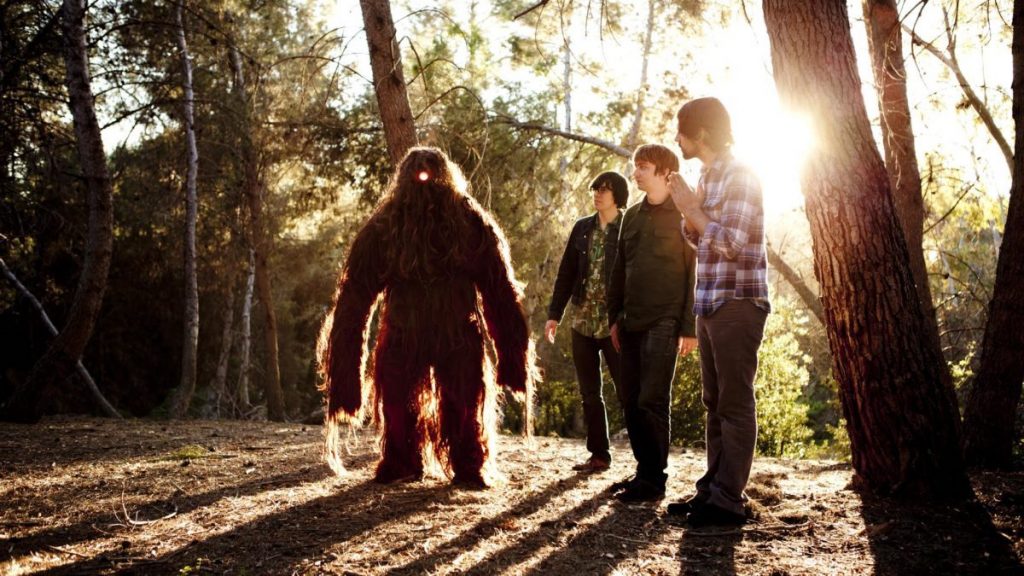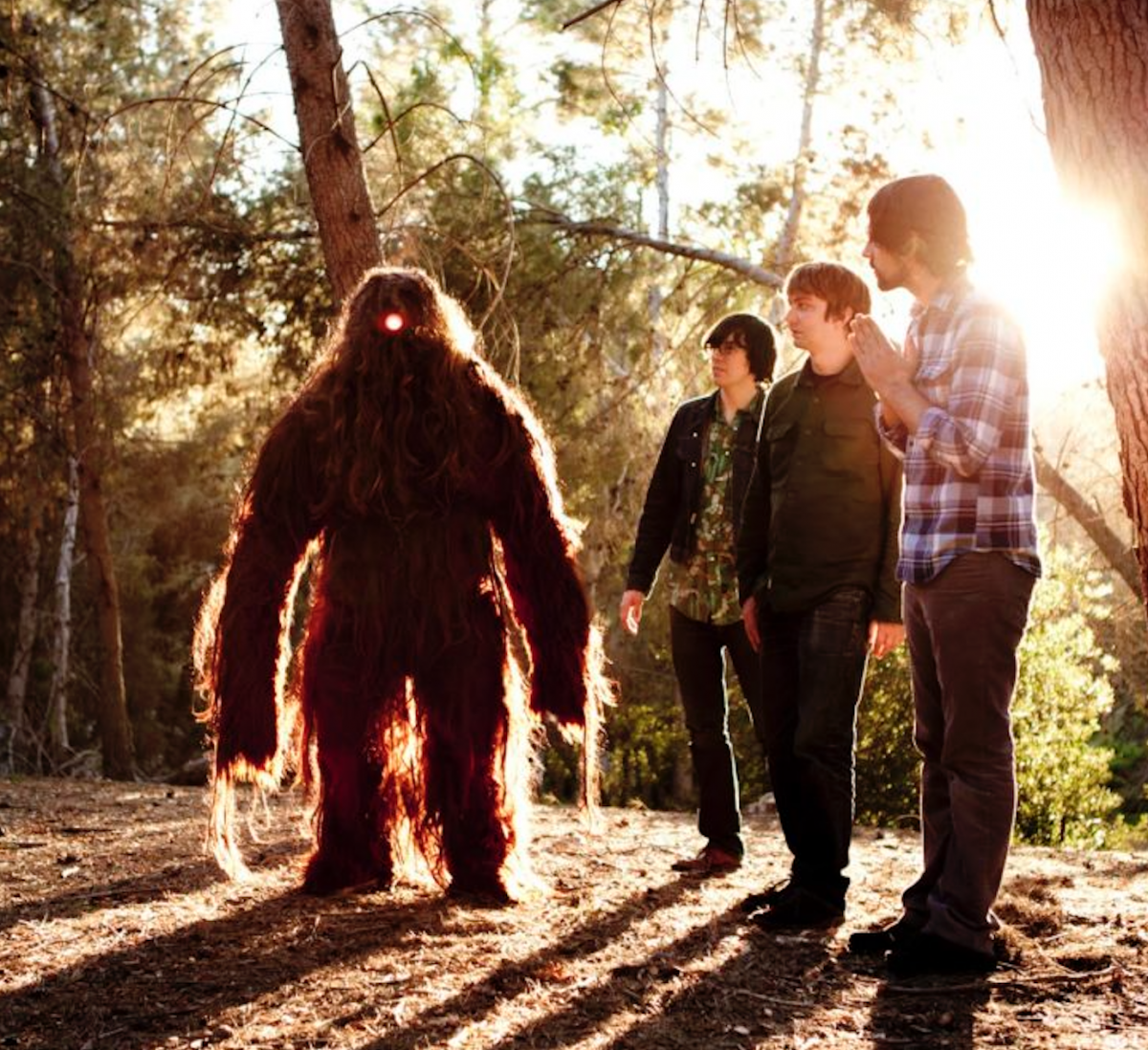
Dead Meadow revels in the technical ecstasy behind its latest psych/rock odyssey
On new album Warble Womb (Xemu), Dead Meadow continues going its own way with a thick, dense sound that includes traces of folk, metal, ’60s rock, swampy blues and murky psychedelia. Hints of Howlin’ Wolf and Neil Young also go drifting through the mix from time to time.
“We get lumped into a bunch of different genres that don’t necessarily describe what we do,” says guitarist Jason Simon. “When we first came out of D.C. in ’99, we got described as the lighter side of stoner rock. Nowadays, they say we’re the heavier side of psychedelia, but we’ve taken a long, hard road to carve out our own niche. Our fans understand the band for what it is: not stoner, or heavy metal, or psychedelic—just Dead Meadow.”
The long hours the band puts into its music is evident on every track of Warble Womb, an album that took three years to put together. The songs were shaped in Dead Meadow’s home studio and involved experiments with new sounds and recording techniques. The group also recently welcomed back original drummer Mark Laughlin, who added his jazzy feel to the proceedings.
“Mark was a lawyer in New York, but he said he’d had enough of that for the time being,” says Simon. “He moved out to L.A. and rejoined the band a few years ago. He has a great swing to the way he plays, even on the heaviest songs.”
Dead Meadow always starts the recording process by cutting the songs live. “Before you do any layering, it has to feel like a band playing a song together,” says Simon. “After that, we take our time overdubbing different sounds. We want to get a distinct vibe on every track. Since we weren’t in a hurry to get the record out, we had time to go back and spend a few years messing with things, for better or worse—usually for better. Sometimes (a song) doesn’t need anything else; sometimes there’s all kind of things you can do. Every time we put an album out, it opens more doors, so I’m able to go back and look at the old music and see how we’ve progressed. This time, I was aiming for a new vocal sound and more texture. My main guitar is still the Telecaster I’ve been playing since I was 14, but lately I’ve been digging into the Harmony Rocket guitar I just got and a new Tele with a Bigsby (vibrato tailpiece). It’s like a super whammy bar.”
The album has a huge guitar sound, with lots of shadowy textures. Simon created them all, even the most startling ones, by running his guitars through his two favorite amps at top volume. “I’m definitely in favor of turning up loud and saturating the tubes and overrunning the amps,” he says. “The sound is way cooler than using a pedal. I’ve always used a Fender (amp), because it has such clear highs and lows, as well as an Orange (amp) that makes the sound a lot bigger with its dark mid-range. The sitar sound on ‘I’m Cured’ is a solo I recorded on a four-track tape machine. I just flipped the tape over and played it backwards and it fit perfectly. The ‘piano’ on ‘Mr. Chesty’ is just my guitar with a lot of effects on it. I’m a big fan of dub reggae. Some of the studio tricks they use—layers of delay and reverb—find their way into Dead Meadow songs. We’re not going to play a reggae song, but I like their (production) approach. I want to see how far out I can get the songs to sound.
“There is a bit of Farfisa on some of the tracks, too, but it’s hard to hear, almost subliminal,” he says. “I’m going for a sound that your brain can’t really identify. It keeps your mind active and makes you wonder what the hell is going on. I love music with mysterious elements.”
The band’s secretive presentation also applies to Simon’s vocals. “I’m not a big fan of lead vocals,” he says. “I spend time with every aspect of a song and like the words to be an element of the song, not sitting up front. Sometimes they’re way back in the mix, sometimes right in the middle. I try to bring out something unique in every arrangement. The goal is to make records that take you on a journey throughout the whole album. The older bands we listened to growing up, Led Zep and Sabbath, made albums that way.”
Does the cryptic title of the album have any deeper significance? “We just liked the way Warble Womb rolls off the tongue,” says Simon. “We were hanging out and laughing and thinking about album titles, and almost went with Wiggle Room until we came up with this idea. I think it aptly describes the record and what we try to do in general. We want to create an environment that’s dark and inviting, a warm space full of cool vibrations and whatnot. We wanted a name that would catch your attention and have a bit of a weird feel to it.”
Like the last few albums, Warble Womb was produced by bassist Steve Kille, with additional input from Simon and Laughlin. “Everything we do is cooperative, but Steve is the most knowledgeable in terms of recording,” says Simon. “He knows how to set up the mics to get a good drum track. He records other bands as well, so he has a lot of skills in that area. I don’t have his patience. I like to record as fast as I can.”
When Dead Meadow goes on tour to support the new album, the band won’t be attempting to duplicate its sound. “When we play live, we don’t think about the recorded versions,” says Simon. “They’re two separate things. We leave room for experimenting and changing things up. We want to keep the music interesting for ourselves and, hopefully, the audience, too.”
—j. poet







